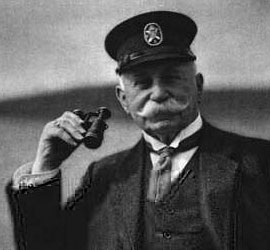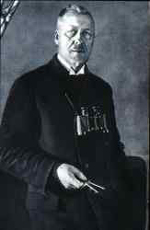 |
The History of the Zeppelin
Part One: 1900 to 1917
|
The first Zeppelin, the LZ-1, was the creation of an irascible but charming old German cavalry officer, Ferdinand Graf von Zeppelin. It flew for the first time on 2 July 1900 near the Bavarian town of Friedrichshafen.
This was the first flight of an untethered rigid airship. It lasted all of 18 minutes.
|

Ferdinand Graf von Zeppelin
|
The Graf had little luck in finding financing for his venture until he enlisted the aid of a young writer, Dr. Hugo Eckener. The good doctor proved adept at both publicity and organization, and he was soon running the day-to-day affairs of the Graf's newly-minted company, Luftschiffbau-Zeppelin.
|
|
In addition to his other duties, Dr. Eckener became one of Zeppelin's finest pilots, eventually training all of the German airship pilots who followed him. Zeppelin built airship after airship, chasing the goal of the perfect passenger ship.
|
|
Zeppelin continued to improve his design and build airships for the German government. In June 1910, LZ-7 Deutschland became the world's first commercial airship. Between 1910 and 1914, zeppelins flew 107,208 miles (172,535 kilometers) and carried 34,028 passengers and crew safely.
During the first world war, the Imperial German government effectively nationalised all of Germany's airship companies. Dr. Eckener was put in charge of Germany's airship pilot training.
| 
Dr. Hugo Eckener
|
|
Spurred on by the demands of war, airship technology surged. Though their success as a strategic bomber was limited following the British invention of incindiary machine-gun ammunition in 1916, they continued to be a powerful psychological weapon and an effective long-range reconnaissance platform.
|
Copyright ©2007 Puget Sound Airship Society
 |
|
|
|
